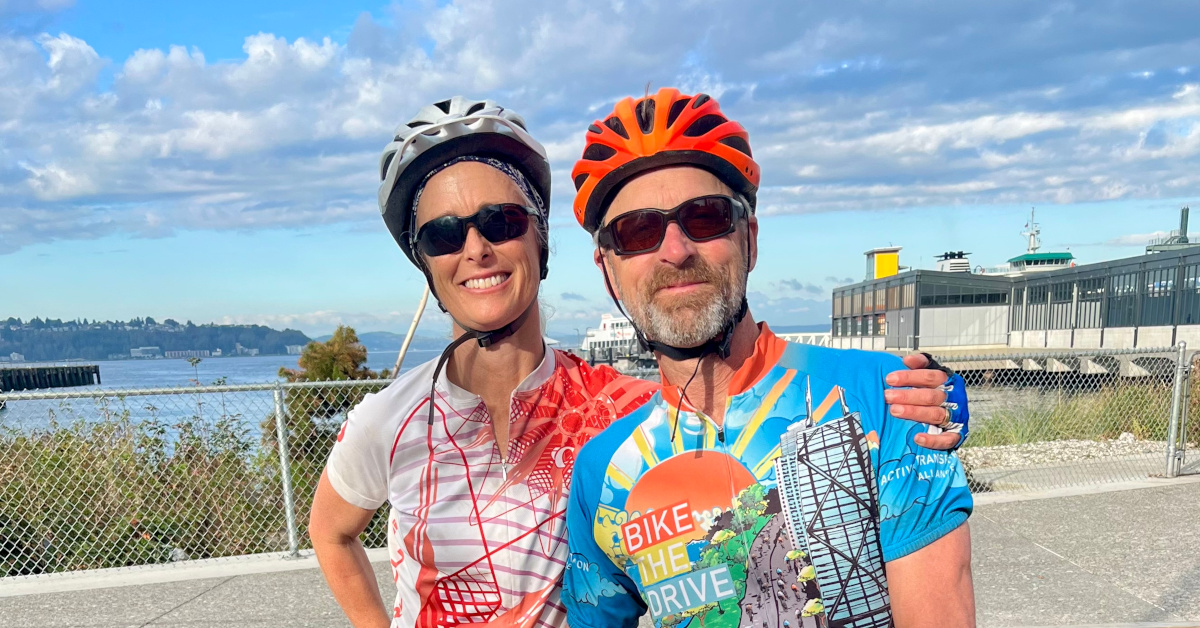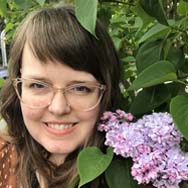Photo credit: Tom Wilson
Our scientific research does a lot of heavy lifting! From studies on toxic chemicals in breast milk to investigations into the chemicals that are released from products into our homes, we use our research to uncover gaps of scientific understanding and bring important environmental health issues to the forefront. Ultimately, this research supports decision-makers to move toward safer chemical policies so that the products in our homes are free of the most hazardous chemicals.
Toxic-Free Future’s science program is led by Erika Schreder, science director. Learn more about Erika and how she develops scientific studies to advance our mission of making transformational changes in the marketplace and government, with safer products available to everyone.
Q: Ok, a very serious question: cake or pie?
A: Both! I cannot choose between cake and pie!
Q: What is your favorite way to have fun or relax?
A: My favorite way is to get outside. When the mountains are full of snow, I love to be in the mountains. Actually I love to be in them when they’re not full of snow too. I just love to be outside, whether it’s working in the garden, biking to work, or other ways to be in nature.
Q: Cats or dogs?
A: Frogs. We have a pet frog named Maxy. He’s a treefrog, or a chorus frog–they have different names. He’s four and a half. He’s doing great!
Q: What are some of the emerging science trends you are seeing in our work?
A: We are seeing more and more that scientists are recognizing that we need to pay attention to the chemicals that are currently in heavy use in making products. These chemicals are largely unregulated and they’re in our homes, in our bodies, and in the outdoor environment.
Q: Many of your studies have been used to move policy in Washington state and beyond. Why is it important for science to inform policy?
A: Well, the goal of toxics policy is to make people and the planet healthier. And we need to use science to the best of our ability to inform the policies so that we’re taking the actions that will have the most impact, and making sure we’re not exposed to toxic chemicals that can make us sick.
Q: What policy are you most proud of where your science/expertise was used to pass it?
A: Winning the Washington State law that created the Safer Products Program wasn’t the result of just one study, but the body of research we have done over the years has made the case that to protect health, we need to address the toxic chemicals present in products.
Q: What is your favorite study that you’ve done, and why?
A: One of my favorite studies was when we looked at how chemicals used in products in our homes get from our homes and into waterways. We asked the question, “Could some of the flame retardants used in products in our homes be hitchhiking on our clothes to get from our indoor environment to the outdoor environment? And once they accumulate on our clothing, could they be getting washed off in the laundry?” And (we speculated) that when that water goes through the wastewater treatment plant, the chemicals can go straight through and end up in our waterways.
So we measured flame retardants and house dust from 10 homes in each of two communities. And then in each home, we did a load of laundry with their normal clothing that had been worn around the home. We took a sample of the laundry water and measured flame retardants in that water. And then we also took samples from the wastewater treatment plants in both communities, both the water coming into the plant and the water going out of the plant. When we looked at the level of flame retardants in the water going into the plant, and compared that to the levels that were in the laundry water, we concluded that (the laundry water) was a significant source of toxic flame retardants going to the water treatment plants and eventually to surface water.
The study showed that the decisions we make about what chemicals can be used in products have a direct impact on what chemicals fish and wildlife are exposed to, and the compounds that can end up in our drinking water as well.
So it showed the importance of prevention. Because once these chemicals are in products, there’s a clear pathway for them to get to the outdoor environment.
Q: How do you come up with ideas for studies?
A: A lot of the time, we see interesting information in the scientific literature. It might be something that’s been found in another country, in another region, and we ask the question, could that be happening in the United States? That was the case for the work we did with breast milk recently. We were concerned that some of the newer flame retardants might be turning up in breast milk, based on what we saw from other countries.
Sometimes it starts from a concern about a certain population. In the nap mats study that we did, we were interested in doing a study looking at exposures to young children in the child care setting.
Our goal is to conduct scientific studies that inform policy actions. So we look to fill in some of the gaps of information so that we can enable policymakers to take action.
Q: As a scientist who works on toxic chemical issues, how do you personally navigate the risks of exposure to these chemicals in your daily life and how do you live without being fearful? What makes you feel hopeful about the situation?
A: In terms of protecting myself and my family from toxic chemicals, I think first about what are the simple things we can do to protect ourselves. So those are things like washing our hands, keeping rooms ventilated, and doing some of the straightforward cleaning routines like wet dusting and wet mopping that will help reduce our exposure to chemicals that build up in dust. Then I look at reducing exposure to chemicals through food. So the biggest ways we can do that is by using organics, which have been shown to reduce exposure to pesticides, and doing our own cooking rather than eating a lot of processed foods.
And we also look at the big-ticket items that could have the biggest influence, and that would be things like flooring, insulation, and furniture.
I focus on the positive and what we can do better by dedicating myself to policies that will protect all of us. I direct my energies toward making positive change. In many cases, the only way to protect one of us is to protect all of us.
I feel very hopeful. I’ve seen the amazing progress that we have made in Washington state in particular, and seeing the changes in the marketplace. We have a vision for a world in which the items we use that we bring into our homes, that we use in our schools and workplaces, will be made of sustainable materials that don’t contain chemicals that can either harm us or those who produce the items.





